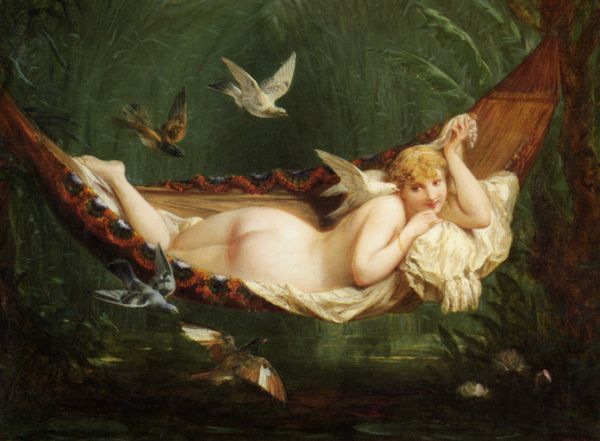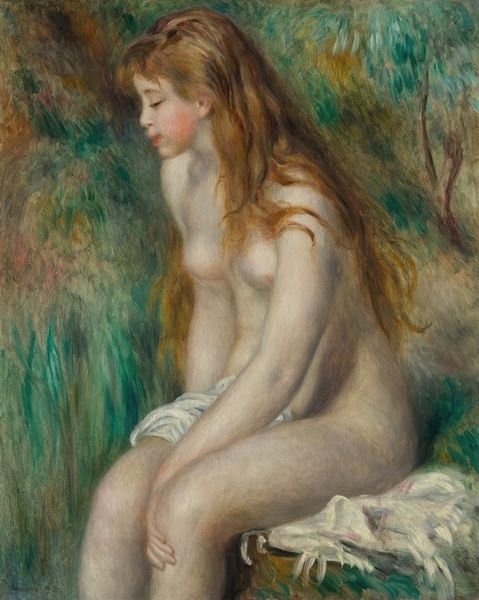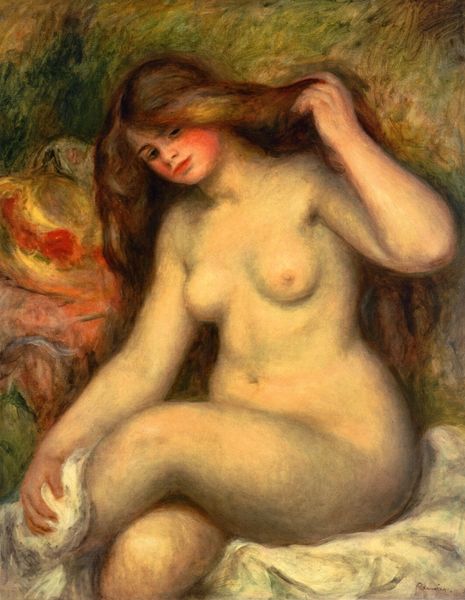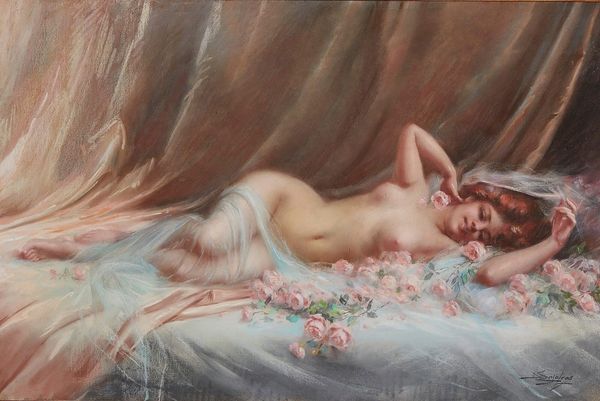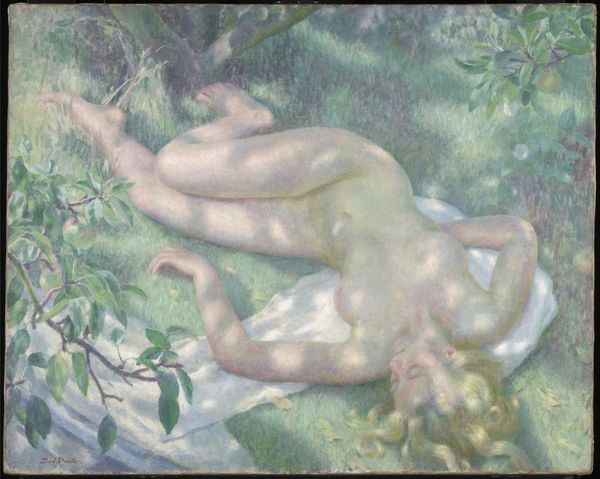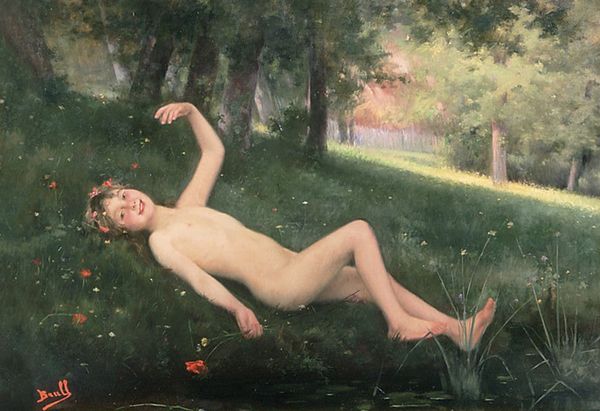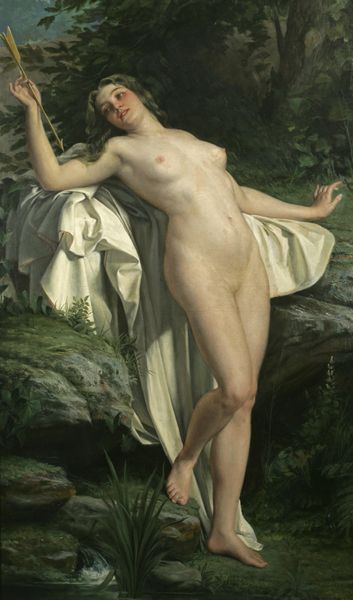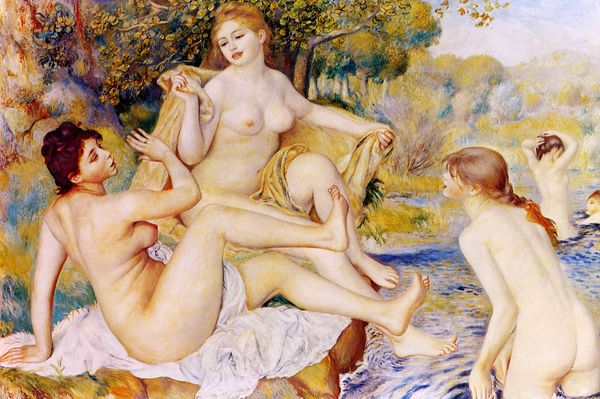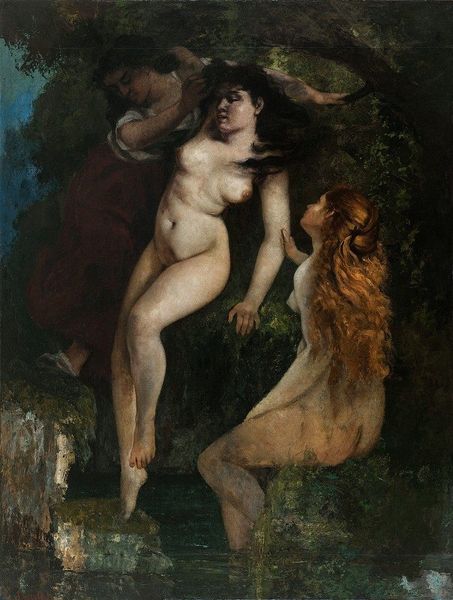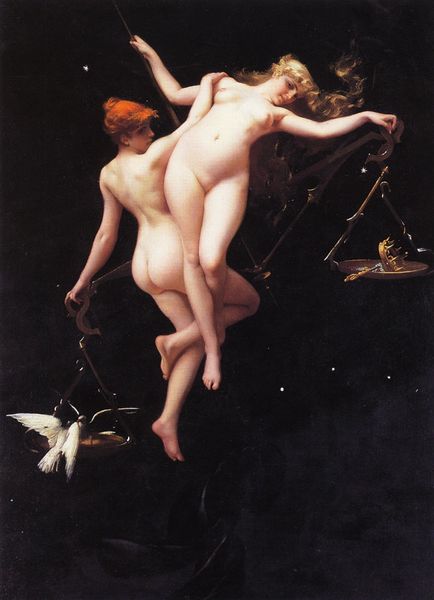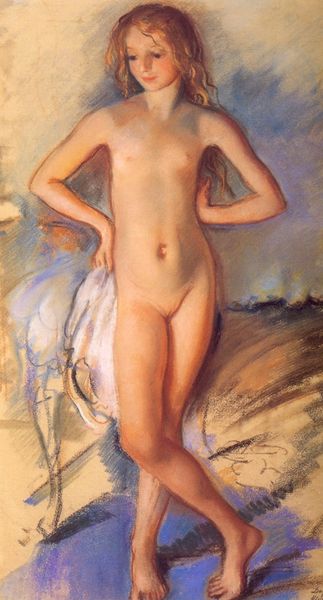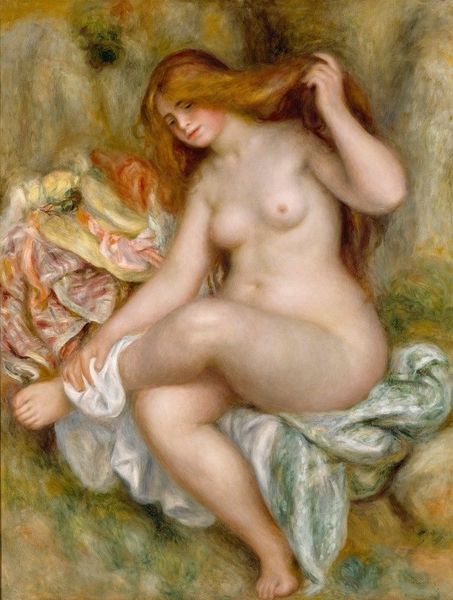
painting, oil-paint
#
allegory
#
painting
#
oil-paint
#
landscape
#
figuration
#
oil painting
#
romanticism
#
mythology
#
nude
Copyright: Public domain
Editor: So, here we have an untitled painting, potentially oil paint, by Mohammad Hadi Tajvidi. It depicts a nude woman with a swan in a landscape setting. I’m immediately struck by how… vulnerable and exposed she appears, but almost serene? What do you see in this piece? Curator: I see a powerful intersection of mythology, gender, and artistic tradition, fraught with potential misinterpretations. The allusion to the myth of Leda and the Swan immediately complicates our reading. Zeus’s rape of Leda, disguised as a swan, carries significant weight in how we understand female agency and the pervasive nature of sexual violence, even within a seemingly beautiful and pastoral scene. What does the artist aim to convey by portraying the female figure in such a composition? Editor: Well, I suppose it depends on his intent, which we can't know for sure. It *could* be a romanticized view, typical of the style? Curator: Indeed, Romanticism often idealizes the past and mythologizes experience. Yet, the very act of visualizing such narratives risks perpetuating problematic power dynamics if it fails to acknowledge, or worse, ignores the violence inherent in these stories. We must engage with it critically, considering both the artist’s potential intentions, the historical context in which it was created, and, importantly, the gaze through which we, as viewers, approach it. Who does this artwork serve? Editor: So it’s less about aesthetic enjoyment and more about confronting these underlying issues? Curator: Beauty and critical engagement are not mutually exclusive. It's about being aware of the complex layers beneath the surface. By analyzing how such narratives are visually constructed, and who benefits from their repeated telling, we can challenge dominant interpretations and potentially reclaim the stories for a more equitable understanding. Editor: That's a lot to think about! I didn’t initially see all of that, but it definitely adds depth to the work and gives a new framework to view the art. Curator: Exactly, art history should instigate conversation. Approaching the piece through social and historical context makes it all the more powerful, right?
Comments
No comments
Be the first to comment and join the conversation on the ultimate creative platform.
